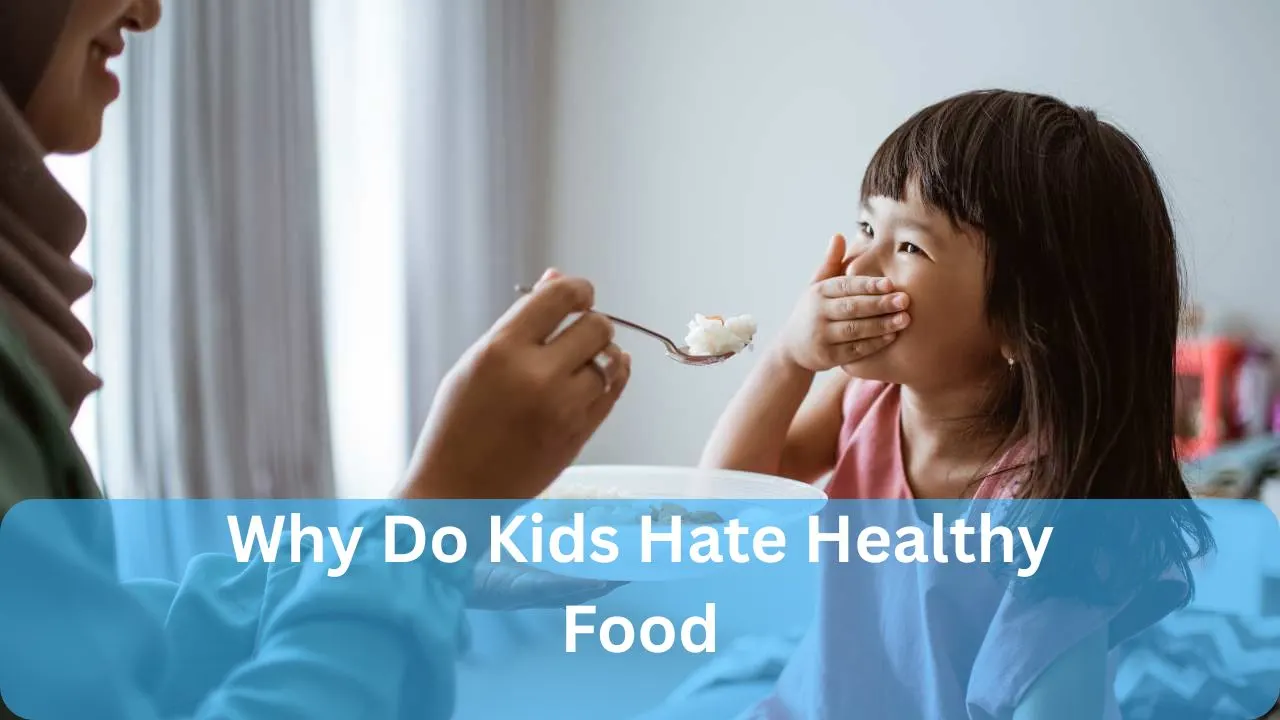If you’ve ever served broccoli only to be met with crossed arms and a firm “No!”, you’re not alone. Millions of parents struggle with kids refusing healthy food, leaving mealtimes stressful and frustrating.
But here’s the good news: kids aren’t born hating vegetables — there are biological, psychological, and even cultural reasons why they resist healthy meals. Understanding why kids hate healthy food is the first step to helping them eat better and enjoy nutritious meals without a fight.
In this article, we’ll explore the top 10 reasons children dislike healthy food and provide practical, research-backed solutions parents can try today.
Also Read
Read –What Food to Make for a Kids’ Party (2025): Fun, Healthy & Budget-Friendly Ideas
1. Natural Preference for Sweet and Salty Flavors
Children are biologically wired to prefer sweet and salty foods because these flavors signal energy-rich, safe-to-eat foods. Bitter or sour tastes (common in leafy greens) can signal “danger” to a child’s brain.
Solution:
Start with naturally sweeter vegetables like carrots, peas, or roasted sweet potatoes. Slowly introduce slightly bitter foods in small portions and pair them with flavors kids already like — for example, add a drizzle of olive oil and parmesan to steamed broccoli.
2. Sensitive Taste Buds and Smell
Kids have more taste buds than adults, which makes certain flavors feel more intense. Strong-smelling vegetables like Brussels sprouts or cabbage can be overwhelming for them.
Solution:
Try different cooking methods to mellow flavors. Roasting vegetables caramelizes natural sugars and makes them taste less bitter. Also, allow kids to help in the kitchen — when they’re involved, they’re more willing to try new foods.
⏰ 3. Exposure Matters — Too Little, Too Late
Research shows that children may need 10–15 exposures to a new food before accepting it. If you stop offering vegetables after one or two rejections, kids miss the chance to get used to the flavor.
Solution:
Keep offering small portions without pressure. Celebrate when they try, but don’t force them to eat everything on their plate. Gradual exposure builds familiarity.
4. Marketing of Junk Food
Kids are bombarded with advertisements for sugary cereals, colorful snacks, and fast food. These foods are designed to be addictive, making plain vegetables less appealing.
Solution:
Limit screen time or switch to ad-free platforms when possible. Talk to your kids about how food commercials work and why your family makes healthy choices. Make healthy food visually fun — use colorful plates, cut fruit into fun shapes, or make “rainbow salads.”
5. Negative Associations With Healthy Food
If mealtimes feel like a battle, children can develop a negative emotional association with healthy food. Being forced to finish vegetables often backfires.
Solution:
Avoid turning mealtimes into a fight. Serve a variety of foods and allow kids to choose what and how much they eat. Keep the atmosphere positive and stress-free.
⏳ 6. Lack of Role Modeling
Kids imitate what they see. If parents skip vegetables or complain about them, children are less likely to try them.
Solution:
Be a role model. Eat the same healthy meals as your kids and show genuine enjoyment. When children see you happily eating salad, they’re more likely to follow your lead.
7. Processed Food Preference
Frequent exposure to highly processed foods trains the brain to expect strong flavors (extra salt, sugar, fat). Whole foods taste “boring” by comparison.
Solution:
Gradually reduce the amount of processed snacks at home. Transition to healthier swaps — air-popped popcorn instead of chips, fruit instead of candy. Over time, your child’s taste buds will adjust.
8. Overconsumption of Sugary Drinks
Sweetened beverages like juice, soda, or flavored milk dull children’s appetite for balanced meals and make water and plain foods less appealing.
Solution:
Offer water as the primary drink and reserve juice as an occasional treat. Flavor water naturally with lemon, berries, or cucumber slices to make it fun.
9. Lack of Involvement in Food Preparation
When kids are not involved in cooking, healthy food feels like something that’s just “put in front of them” rather than something they chose.
Solution:
Let kids help with age-appropriate kitchen tasks — washing vegetables, stirring ingredients, or setting the table. When they feel proud of what they helped make, they’re more excited to eat it.
10. Peer Influence and Social Pressure
Children often copy their friends’ eating habits. If classmates dislike vegetables, your child may refuse them too.
Solution:
Encourage playdates or group meals where healthy eating is normalized. Share fun facts about healthy foods — for example, “carrots help you see in the dark” — to spark curiosity.
Trusted Resource for Parents
According to Harvard School of Public Health, repeated exposure and positive role modeling are two of the most effective strategies to help kids accept nutritious foods.
FAQs: Kids and Healthy Food
Q1: How do I get my picky eater to try vegetables?
Offer very small portions repeatedly without pressure. Pair vegetables with favorite dips or toppings to make them more appealing.
Q2: Should I hide vegetables in food?
Sneaking vegetables (like spinach in smoothies) can work short-term, but also let kids see and taste vegetables openly so they learn to accept them.
Q3: Is it normal for kids to refuse most vegetables?
Yes. Many children go through picky eating phases, especially between ages 2–6. Most kids gradually expand their food preferences with consistent exposure.
Q4: How much healthy food should kids eat daily?
Children need 1–3 cups of vegetables and 1–2 cups of fruit daily depending on age and activity level. Consult your pediatrician for specific guidance.
Conclusion
Kids hating healthy food is frustrating, but it’s not permanent. With patience, positive reinforcement, and consistent exposure, you can teach children to appreciate nutritious meals. Make food fun, involve kids in the process, and model the behavior you want to see. Over time, your child’s relationship with healthy eating will improve — turning mealtimes into a moment of joy instead of a battleground.





